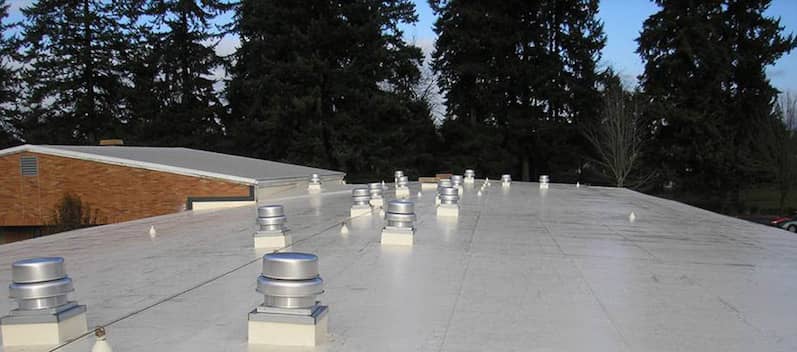 At MRCA this year, a contractor asked, “why might vultures be on a roofing system pecking at it?” The popping and cracking sound from natural movement on any given roofing system could be a signal for supper time to turkey vultures, or any type of bird for that matter. One Massachusetts school found 60 turkey vultures perched on its rooftop, which resulted in $10,000 worth of damages and many questions. We don’t know exactly what brought these vultures to this Massachusetts roof, but speculations can be made as to why they were pecking.
At MRCA this year, a contractor asked, “why might vultures be on a roofing system pecking at it?” The popping and cracking sound from natural movement on any given roofing system could be a signal for supper time to turkey vultures, or any type of bird for that matter. One Massachusetts school found 60 turkey vultures perched on its rooftop, which resulted in $10,000 worth of damages and many questions. We don’t know exactly what brought these vultures to this Massachusetts roof, but speculations can be made as to why they were pecking.
Roof Movement
All roofing systems and buildings move because many different materials expand and contract as a natural reaction to the inside and outside environments. That’s why buildings and roofs have wall joints, control joints and expansion joints that allow for this natural movement. The subtle movements of different roofing components could cause a popping and cracking noise that may signal the presence of insect life and therefore attracts the birds to the source—the roof.
Potential Causes
While there is no direct reason as to why mass quantities of turkey vultures or other birds are attracted to a roofing system, there are a few assumed causes. One possible reason is demographics. For example, birds that inhabit a coastal area are known to take food that is shelled and purposefully drop said food on a rooftop to break the shell and consume what is inside. Birds in this coastal-like area may have a different perspective of the roof below them, and therefore use this surface differently than a bird in a more urban setting. The roosting process may be another reason for the attraction of birds and roofs. And a final speculation as to why the birds are pecking at the roof may be related to cleaning. A bird trying to clean its beak might use the surface of a roof.
Prevention
There are a few prevention methods that can be employed for this unique behavior. The first is setting up fake plastic owls on your roof as a scare tactic for birds looking to land on it . Another method is a controlled trap and release. Although, because of the Migratory Bird Treaty Act, a permit is required for migratory birds such as vultures. Finally, spikes and tapes are commonly used on parapet walls and ledges to keep birds from choosing the roof as a roosting site. There are many other methods depending on the type of bird and location.
Roof Type Matters
With many options of roofing on the market, the wood and green systems are more likely to be prone to this type of bird behavior than systems constructed with other materials. Wood and green roofing systems naturally attract bugs, making them that much more appetizing to a bird.
While there are no guarantees, FiberTite roofing systems are less prone to this type of bird activity than other roofing systems. If bird behavior on your roof becomes more consistent, consult your roofing contractor to determine the best deterrent for your needs.
What other reasons could have motivated the turkey vultures to significantly damage this roofing system? Tell us about them in the comments.
-1.png?width=500&height=271&name=FiberTite_Only%20(500px%20wide)-1.png)


-1.png)